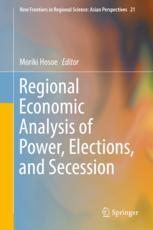

Most ebook files are in PDF format, so you can easily read them using various software such as Foxit Reader or directly on the Google Chrome browser.
Some ebook files are released by publishers in other formats such as .awz, .mobi, .epub, .fb2, etc. You may need to install specific software to read these formats on mobile/PC, such as Calibre.
Please read the tutorial at this link: https://ebookbell.com/faq
We offer FREE conversion to the popular formats you request; however, this may take some time. Therefore, right after payment, please email us, and we will try to provide the service as quickly as possible.
For some exceptional file formats or broken links (if any), please refrain from opening any disputes. Instead, email us first, and we will try to assist within a maximum of 6 hours.
EbookBell Team

4.0
66 reviewsThe main object of this book is to explain some of the mechanisms of integration and secession among regions from the point of view of game theory. To attain this goal, the incentives of regions in a country to unite or to secede and the conditions in the way for the member countries of a federation to leave peacefully are examined. Tensions over secession have become more and more serious, including separatist tensions in China, India, Iraq, Myanmar, and Sri Lanka. Studies included in this book stress differing preferences in the type of policy in each region and the influence of a third region on the power of secession. Decentralization strategies of tax-subsidy policy and governance policy in a political or economic group composed of two regions are shown to be important as a way to avoid wasteful conflict for the secession incentive of a minority region. How those incentives depend on heterogeneity costs associated with different preferences over the type of region and the relative size of the two regions is shown. Also provided is an analytical framework in which secessions are the equilibrium outcome of explicit civil conflict, where regions with different preferences invest in costly conflict activities. Finally, an empirical analysis is made of determinant factors of secession movements in many regions to verify the validity of our theories of secession. This book is recommended to researchers who are interested in a new economic geography and an interdisciplinary approach for regional economics.